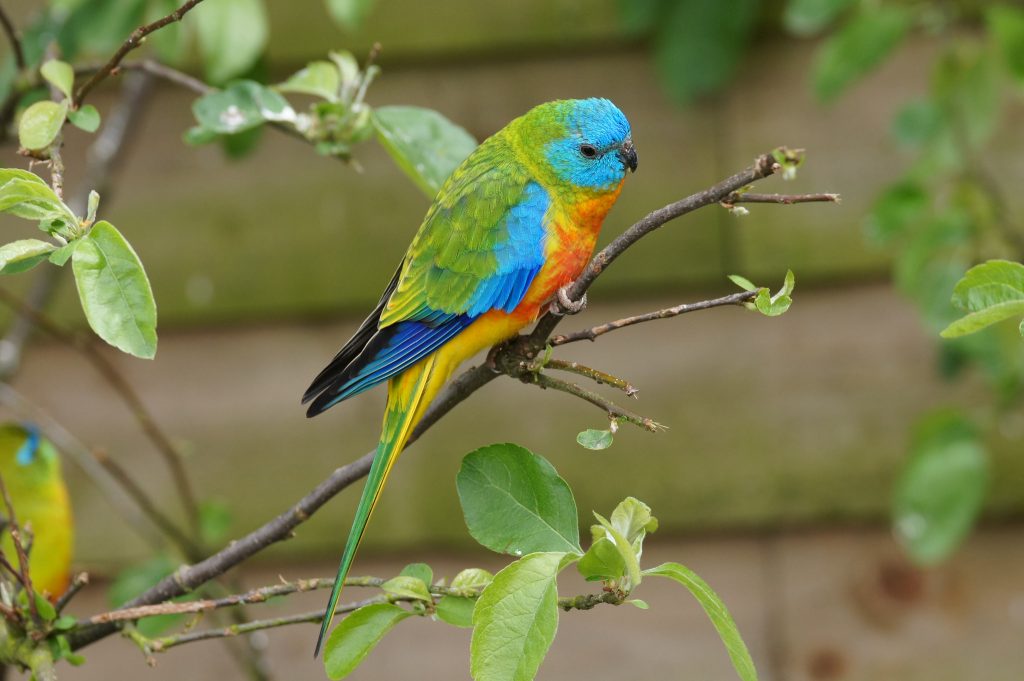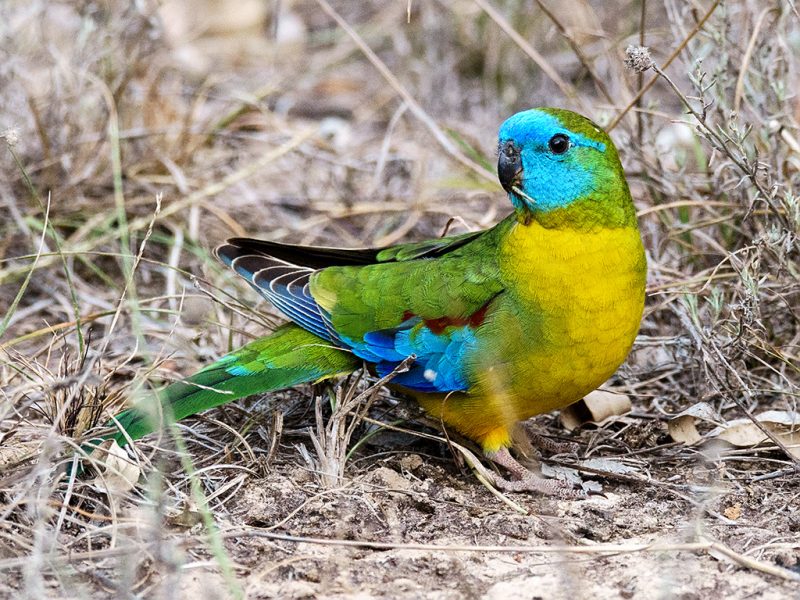The Turquoise parrot (known colloquially as the “turk”) is a small parrot found in eastern Australia – from the south of Queensland to the north of Victoria. They are popular as aviary birds in Australia and are increasing in popularity throughout Europe and America. Their docile temperament, easy care requirements and quiet nature makes them well suited to beginner aviculturists. Numerous colour mutations have been developed in captivity; including yellow, red-fronted, pied, jade and olive.

Diet
The basis of the Turquoise parrot’s diet is a quality small parrot mix seed mix. It should be stored in an airtight plastic drum to prevent exposure to vermin and moisture. Dry seed mixes are most nutritious when they have been soaked or sprouted.
Green seeding grasses are relished by Turquoise parrots. Unless the aviary is immensely large and grasses can grow faster than the birds can consume them, it may be necessary to plant seeding grasses into pots which can be rotated out to allow the plant to recover.
Turquoise parrots should be provided with a wide variety of fruit and vegetables. Green leafy vegetables such as kale, pak choy, and endive are especially important. Apple, pear, corn, carrot and broccoli are readily consumed. As with all birds; Avocado, chocolate, caffeine and alcohol are toxic and should not be fed.
Commercial parrot pellets can be offered as a more-nutritious alternative to seed, but they do not form a complete diet – contrary to the claims of many manufacturers. Some birds may be unwilling to eat pellet, so they should be phased into their diet slowly.

Breeding
Turquoise parrots will breed from twelve months of age, but best results are achieved once the birds reach two years of age. The breeding season is from spring through to early summer, though other times of the year are not unheard of.
A medium sized nesting box or hollow log will be used. Turquoise parrots can produce up to three clutches per year, each containing between 3-6 young. Eggs are incubated for approximately 18 days and fledge the nest at four weeks of age. They become fully independent 3-4 weeks later.
The hen may become assertive towards the cock during the breeding season, but they should not be separated.
Housing
Turquoise parrots can be kept in a wide variety of different aviary types, including cages, traditional aviaries and suspended flights. These birds love to forage on the ground, so care should be taken to prevent parasite infection.
Turquoise parrots are immensely placid and can cohabitate with other small placid parrots, finches and quail. Do not house them with other species in the Neophema genus, as hybridization may occur. They can usually be housed with Bourke’s parrots without incident, but ensure their are no unpaired birds.
Turquoise parrots should be provided with an adequate amount of flying space to ensure they receive sufficient exercise. Birds that do not have room to fly may suffer from stress or obesity. At least two meters of uninterrupted flying space is recommended.
Non-toxic leaves and branches should be provided for chewing. They will be destructive to foliage in a planted aviary.
Health
As a grass parrot species, the Turquoise parrot spends quite a bit of time foraging at ground level. Keeping the aviary substrate dry and clean (free from faeces) is very important. A strict worming and parasite control regime should be imposed as a preventative measure.
A healthy Turquoise parrot can be expected to live for upwards of ten years in captivity.
We have a male Turk my wife bred and he is at least 20 years old. She used to breed normal Turks, no mutations, but due to ill health had to stop the breeding and let them pass on due to natural attrician. Patch, is the last of her birds, it will be interesting to see how long he goes.